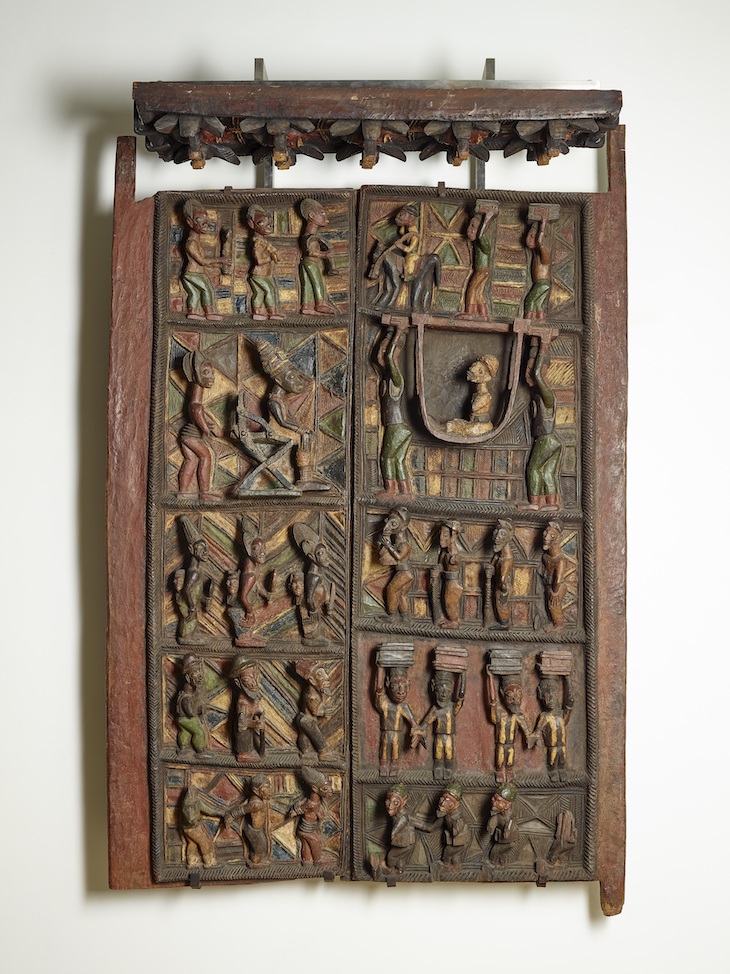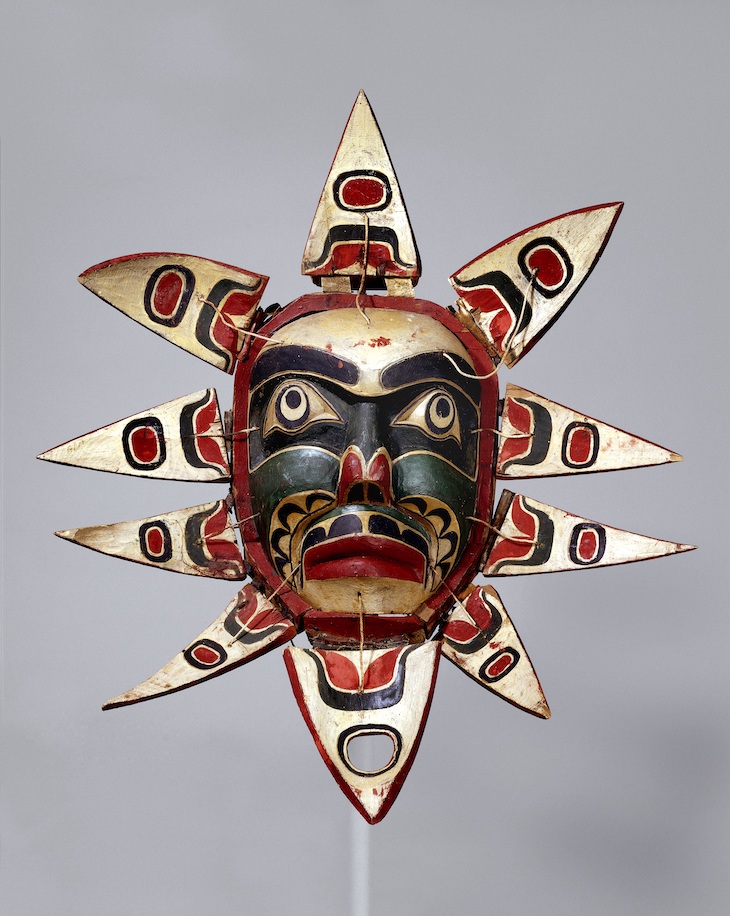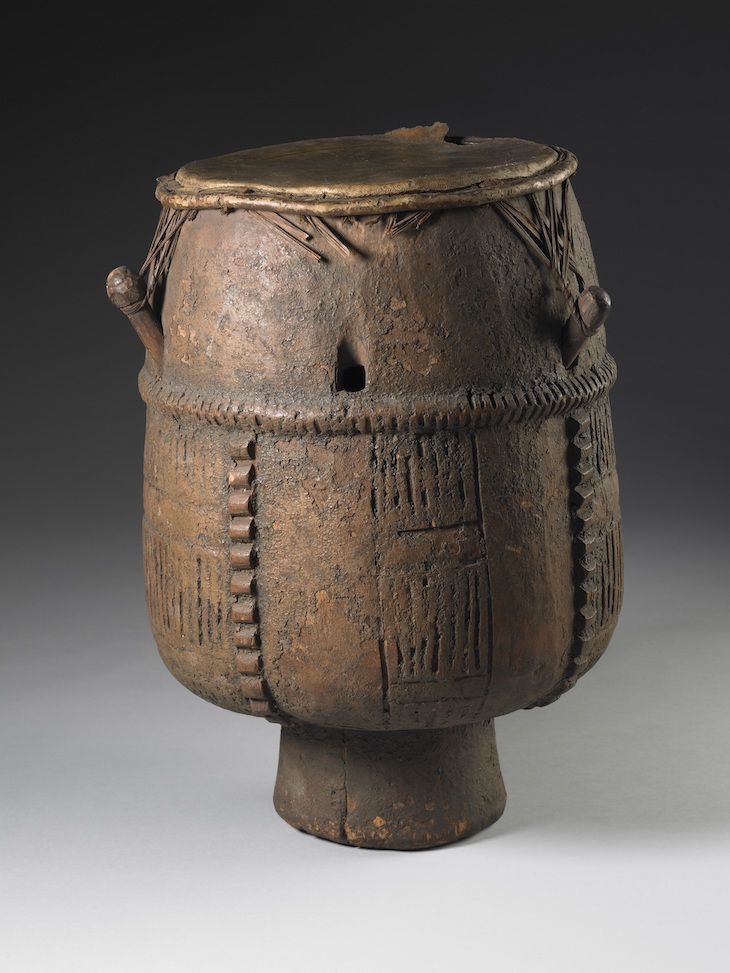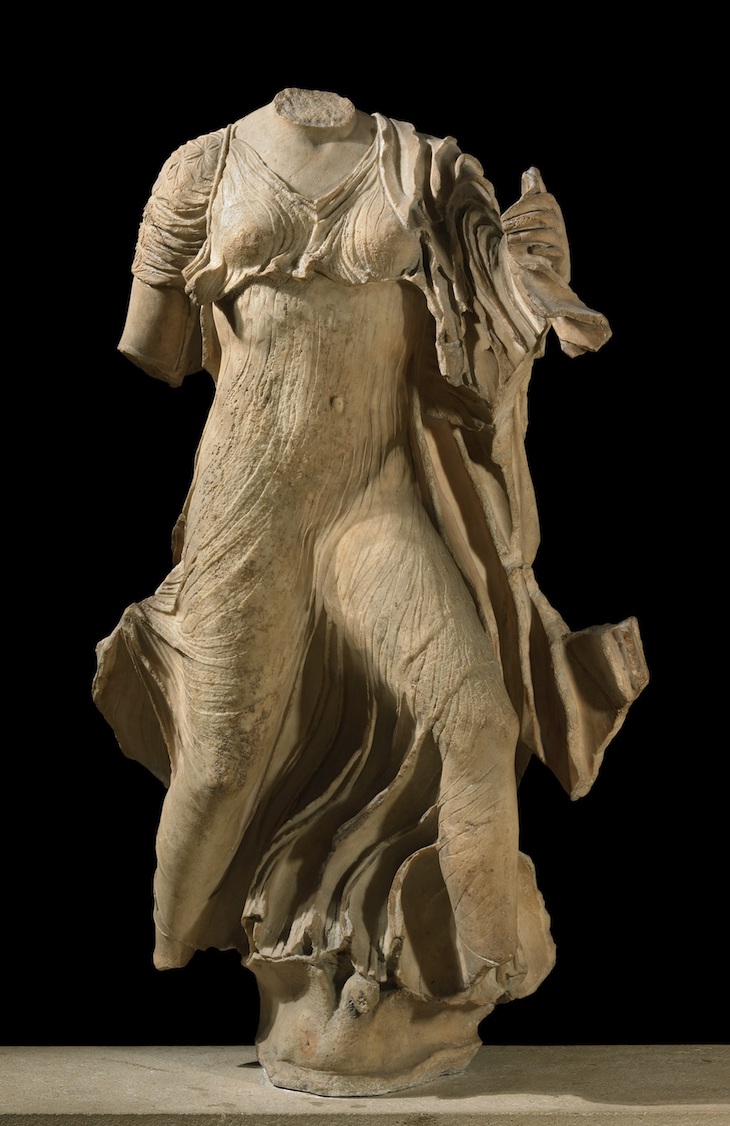For visitors returning to the British Museum, which reopened in August, the experience may feel a little different. While the majority of the ground-floor galleries are open, the upper floors remain closed, and the public must adhere to a one-way system. However, the new route also offers visitors the opportunity to follow the recently unveiled ‘Collecting and empire’ trail, which promises to explore the ‘different, complex and sometimes controversial journeys of objects that would become part of the Museum collection’.
Since 2018, the museum’s ‘Collected Histories’ talks have explored a similar theme, initially prompting headlines that distilled its position into a defensive insistence that ‘not everything was looted’. It is of course true that not everything in the museum came to Britain through looting (although many objects in the collection did), and there are important conversations to be had about the various individuals, communities and interactions involved in an object’s journey to the museum. The ‘Collecting and empire’ trail explores a wide range of collecting histories through 15 objects, inviting visitors to think in more depth about the journeys of objects into the museum and the people they have encountered along the way. Some of the new labels place greater emphasis on the agency of indigenous people in that story. While the collectors (most of them wealthy white men) who brought objects to Britain still occupy a prominent role in the narrative, the labels also highlight the involvement of individuals such as the Ogoga of Ikere, Nigeria, a Yoruba leader who donated a door from his palace to the museum in 1924. The inclusion of a dance display co-curated with the Kiribati community in the UK in 2017 (and here represented by a costume) also demonstrates the active role played by community members in the acquisition and display of objects.

Door and lintel (c. 1910–14), Olowe of Ise. British Museum, London
This is important work, and there needs to be room for such nuances as museums increasingly reflect on the history and future of their ‘encyclopaedic’ collections. However, nuanced conversation is only possible if museums engage fully with the urgent questions being asked of them; if they wish to encourage discussion of the complex ways in which objects have come to be in their collections, then they also need to recognise the role that violence, racism and subjugation have played in that process. With this trail, the British Museum gives the impression that it is keen to skip over that part of the conversation.

Mask (c. 1910), Kwakwaka’wakw people. British Museum, London, on longterm loan to the U’Mista Cultural Centre, Alert Bay, British Columbia
Take, for example, the label for an object that isn’t in fact at the museum, a Kwakwaka’wakw mask ‘confiscated by the Canadian authorities’ in 1921 (the Canadian government had banned potlatches in 1884, outlawing these gift-giving ceremonies which played an important role in indigenous society in the Pacific Northwest). The mask was later donated to the British Museum, and has been on long-term loan to the U’mista Cultural Centre in British Columbia since 2005; its inclusion highlights the use of long-term or permanent loans in response to calls for repatriation, and as such is an intriguing addition to the trail. The label contextualising the potlatch ban as part of ‘national efforts to assimilate First Nations People’, however, does nothing to acknowledge how such policies worked to erase indigenous culture through the suppression of traditions and customs that ran counter to Euro-Canadian, Christian ideals; the Indian Residential School system, for instance, mandated the removal of children of indigenous peoples from their families, isolating them from their homes, languages and beliefs.
I am all too aware of the challenges of trying to address such histories within a large institution, having curated ‘Maqdala 1868’ (2018) at the V&A, a display that included Ethiopian objects that have been at the centre of a restitution debate for many years. For curators, there is a difficult balancing act in ensuring that the description of objects fits with any museum’s wider position and policies, and fulfils the need for a coherent museum ‘voice’ that uses approved language and terminology. But that has implications. Since 2017, the Museums are Not Neutral initiative has been campaigning internationally to ‘expose the myth of museum neutrality’. Purported objectivity requires that some information is privileged, some omitted, and the language used in object labelling has an important role to play in how a museum either acknowledges, or shies away from, its own complicity in global injustices.
In these labels, when historic events are presented in a supposedly neutral manner, the narrative finds a way to bypass the controversies the trail claims to address. In the label for an Egyptian statue of Ankhrenepnefer, for example, the British navy’s bombardment of Alexandria in 1882 (‘to quell a nationalist rebellion’) and the subsequent control of Egypt by Britain is confined to a single introductory sentence, while the remainder of the text is given over to the British exploration and excavation in Egypt which commenced ‘that same year’. The narrative obfuscates the link between British control and the excavations in question, rather than directly addressing the colonial power structures within which these activities took place. The label for an Akan drum, thought to have been brought from West Africa to North America on a slave ship, acknowledges the ‘horrendous conditions’ on these ships – but in adopting the passive voice to describe how captives were ‘forced to dance for exercise’ to such drums during the Middle Passage, the label downplays the violence and oppression of these events, and entirely omits the human instigators of that ‘force’. The visitor must read between the lines to fill in the blanks in the story.

Drum (18th century), Akan, Ghana. British Museum, London
Museum labels are always tricky to write, and fitting a complex story into a tight word limit – and in language that requires institutional approval – is an eternal battle for many museum professionals. However, this also means that decisions about what to include – or not include – in these texts become an indication of the museum’s priorities. In the case of a military tunic looted from Sudan in 1898, the use of precious word-count to explain that the looting ‘follow[ed] established practice for both sides of the conflict at this period’ is indicative of the exculpatory tone frequently adopted here. The label for the Nereid monument, excavated from the ancient city of Xanthos in the 1840s, is almost entirely dedicated to the permission sought by Charles Fellows for its removal and the historic legalities of its export from Turkey – conveniently looking away from the Parthenon marbles, which are displayed in the neighbouring gallery but are omitted from the trail. The official permission (firman) for their removal from Athens has long been a subject of legal analysis and debate.

Statue from the Nereid Monument (c. 390–380 BC), Lycia. British Museum, London
Indeed, most of the museum’s most controversial holdings – such as the Benin Bronzes and the Hoa Hakananai’a statue from Easter Island, as well as the Parthenon marbles – are absent here, and conspicuously so, since the trail brings visitors so near to them. Yes, the opportunity to learn about less widely discussed objects is welcome. But reading about a Nigerian ancestral screen, entrusted to a British district officer by Kalabari chiefs for safe-keeping in 1916, I was acutely aware that the sculptures looted from Benin by the British army in 1897 were on display behind me – as though the trail had been designed to draw the attention away from the elephant in the room.
The museum promises that ‘further objects will be added’ to the ‘Collecting and empire’ trail and that it is only the beginning of ‘plans for new displays to better acknowledge the intellectual, economic and social origins of the collection, and the future role of the collection in Britain and the world’. I hope that the next phase of these plans will see the museum begin to engage more fully with questions surrounding the historic and ongoing injustices represented by many of the objects in its collections, and what their continued presence in the museum means today.
From the October 2020 issue of Apollo. Preview and subscribe here.

Has the British Museum finally found its voice?
Mask (detail; c. 1910), Kwakwaka’wakw people. British Museum, London, on longterm loan to the U’Mista Cultural Centre, Alert Bay, British Columbia
Share
For visitors returning to the British Museum, which reopened in August, the experience may feel a little different. While the majority of the ground-floor galleries are open, the upper floors remain closed, and the public must adhere to a one-way system. However, the new route also offers visitors the opportunity to follow the recently unveiled ‘Collecting and empire’ trail, which promises to explore the ‘different, complex and sometimes controversial journeys of objects that would become part of the Museum collection’.
Since 2018, the museum’s ‘Collected Histories’ talks have explored a similar theme, initially prompting headlines that distilled its position into a defensive insistence that ‘not everything was looted’. It is of course true that not everything in the museum came to Britain through looting (although many objects in the collection did), and there are important conversations to be had about the various individuals, communities and interactions involved in an object’s journey to the museum. The ‘Collecting and empire’ trail explores a wide range of collecting histories through 15 objects, inviting visitors to think in more depth about the journeys of objects into the museum and the people they have encountered along the way. Some of the new labels place greater emphasis on the agency of indigenous people in that story. While the collectors (most of them wealthy white men) who brought objects to Britain still occupy a prominent role in the narrative, the labels also highlight the involvement of individuals such as the Ogoga of Ikere, Nigeria, a Yoruba leader who donated a door from his palace to the museum in 1924. The inclusion of a dance display co-curated with the Kiribati community in the UK in 2017 (and here represented by a costume) also demonstrates the active role played by community members in the acquisition and display of objects.
Door and lintel (c. 1910–14), Olowe of Ise. British Museum, London
This is important work, and there needs to be room for such nuances as museums increasingly reflect on the history and future of their ‘encyclopaedic’ collections. However, nuanced conversation is only possible if museums engage fully with the urgent questions being asked of them; if they wish to encourage discussion of the complex ways in which objects have come to be in their collections, then they also need to recognise the role that violence, racism and subjugation have played in that process. With this trail, the British Museum gives the impression that it is keen to skip over that part of the conversation.
Mask (c. 1910), Kwakwaka’wakw people. British Museum, London, on longterm loan to the U’Mista Cultural Centre, Alert Bay, British Columbia
Take, for example, the label for an object that isn’t in fact at the museum, a Kwakwaka’wakw mask ‘confiscated by the Canadian authorities’ in 1921 (the Canadian government had banned potlatches in 1884, outlawing these gift-giving ceremonies which played an important role in indigenous society in the Pacific Northwest). The mask was later donated to the British Museum, and has been on long-term loan to the U’mista Cultural Centre in British Columbia since 2005; its inclusion highlights the use of long-term or permanent loans in response to calls for repatriation, and as such is an intriguing addition to the trail. The label contextualising the potlatch ban as part of ‘national efforts to assimilate First Nations People’, however, does nothing to acknowledge how such policies worked to erase indigenous culture through the suppression of traditions and customs that ran counter to Euro-Canadian, Christian ideals; the Indian Residential School system, for instance, mandated the removal of children of indigenous peoples from their families, isolating them from their homes, languages and beliefs.
I am all too aware of the challenges of trying to address such histories within a large institution, having curated ‘Maqdala 1868’ (2018) at the V&A, a display that included Ethiopian objects that have been at the centre of a restitution debate for many years. For curators, there is a difficult balancing act in ensuring that the description of objects fits with any museum’s wider position and policies, and fulfils the need for a coherent museum ‘voice’ that uses approved language and terminology. But that has implications. Since 2017, the Museums are Not Neutral initiative has been campaigning internationally to ‘expose the myth of museum neutrality’. Purported objectivity requires that some information is privileged, some omitted, and the language used in object labelling has an important role to play in how a museum either acknowledges, or shies away from, its own complicity in global injustices.
In these labels, when historic events are presented in a supposedly neutral manner, the narrative finds a way to bypass the controversies the trail claims to address. In the label for an Egyptian statue of Ankhrenepnefer, for example, the British navy’s bombardment of Alexandria in 1882 (‘to quell a nationalist rebellion’) and the subsequent control of Egypt by Britain is confined to a single introductory sentence, while the remainder of the text is given over to the British exploration and excavation in Egypt which commenced ‘that same year’. The narrative obfuscates the link between British control and the excavations in question, rather than directly addressing the colonial power structures within which these activities took place. The label for an Akan drum, thought to have been brought from West Africa to North America on a slave ship, acknowledges the ‘horrendous conditions’ on these ships – but in adopting the passive voice to describe how captives were ‘forced to dance for exercise’ to such drums during the Middle Passage, the label downplays the violence and oppression of these events, and entirely omits the human instigators of that ‘force’. The visitor must read between the lines to fill in the blanks in the story.
Drum (18th century), Akan, Ghana. British Museum, London
Museum labels are always tricky to write, and fitting a complex story into a tight word limit – and in language that requires institutional approval – is an eternal battle for many museum professionals. However, this also means that decisions about what to include – or not include – in these texts become an indication of the museum’s priorities. In the case of a military tunic looted from Sudan in 1898, the use of precious word-count to explain that the looting ‘follow[ed] established practice for both sides of the conflict at this period’ is indicative of the exculpatory tone frequently adopted here. The label for the Nereid monument, excavated from the ancient city of Xanthos in the 1840s, is almost entirely dedicated to the permission sought by Charles Fellows for its removal and the historic legalities of its export from Turkey – conveniently looking away from the Parthenon marbles, which are displayed in the neighbouring gallery but are omitted from the trail. The official permission (firman) for their removal from Athens has long been a subject of legal analysis and debate.
Statue from the Nereid Monument (c. 390–380 BC), Lycia. British Museum, London
Indeed, most of the museum’s most controversial holdings – such as the Benin Bronzes and the Hoa Hakananai’a statue from Easter Island, as well as the Parthenon marbles – are absent here, and conspicuously so, since the trail brings visitors so near to them. Yes, the opportunity to learn about less widely discussed objects is welcome. But reading about a Nigerian ancestral screen, entrusted to a British district officer by Kalabari chiefs for safe-keeping in 1916, I was acutely aware that the sculptures looted from Benin by the British army in 1897 were on display behind me – as though the trail had been designed to draw the attention away from the elephant in the room.
The museum promises that ‘further objects will be added’ to the ‘Collecting and empire’ trail and that it is only the beginning of ‘plans for new displays to better acknowledge the intellectual, economic and social origins of the collection, and the future role of the collection in Britain and the world’. I hope that the next phase of these plans will see the museum begin to engage more fully with questions surrounding the historic and ongoing injustices represented by many of the objects in its collections, and what their continued presence in the museum means today.
From the October 2020 issue of Apollo. Preview and subscribe here.
Unlimited access from just $16 every 3 months
Subscribe to get unlimited and exclusive access to the top art stories, interviews and exhibition reviews.
Share
Recommended for you
The Benin Bronzes are not just virtuoso works of art – they record the kingdom’s history
Benin City will soon have a permanent display of its court bronzes for the first time in over a century. What makes these artworks so extraordinary?
How the Africa Museum is facing up to Belgium’s colonial past
The museum founded by Leopold II has reopened after a five-year closure and rethought all its displays. Has it gone far enough?
‘The elephant in this gallery is the cultural property seized by British troops in the 19th century’
An exhibition about cultural destruction in modern conflicts can’t help but remind us of earlier wars